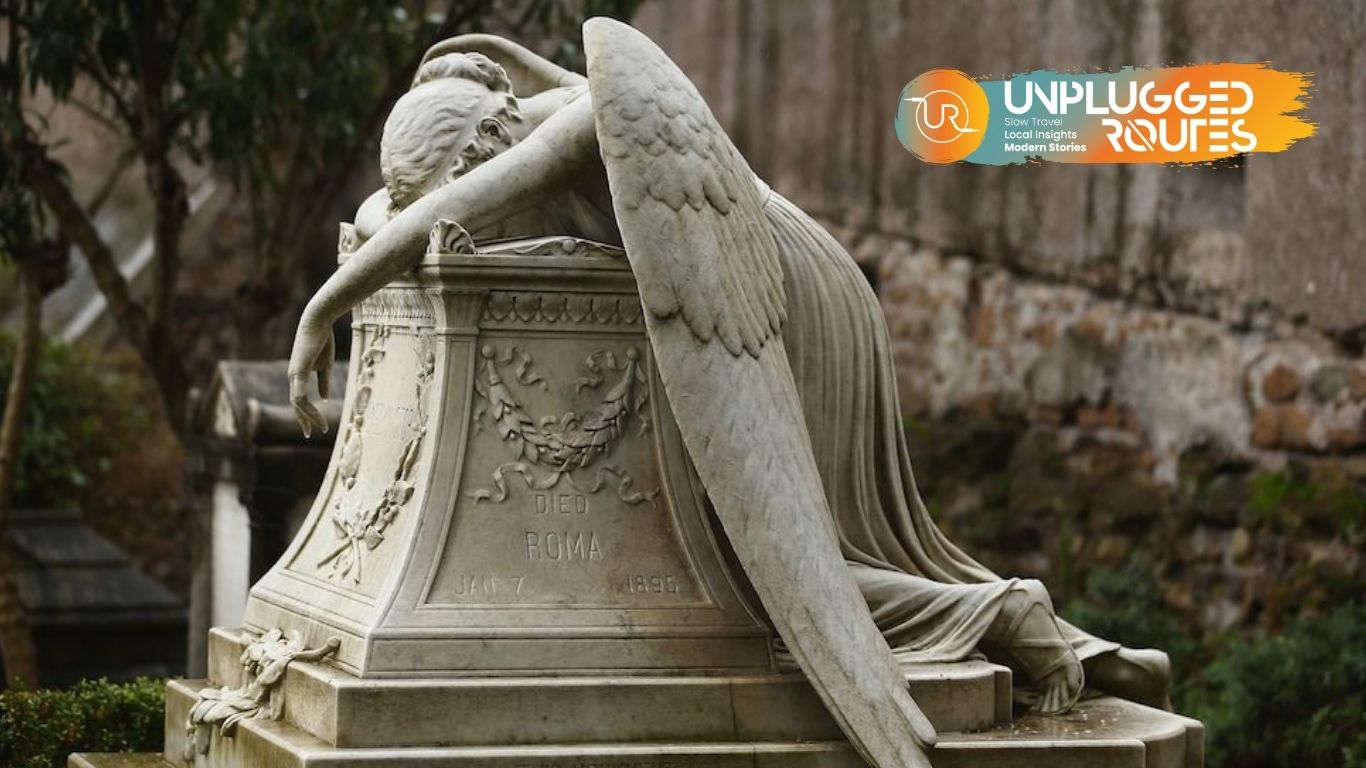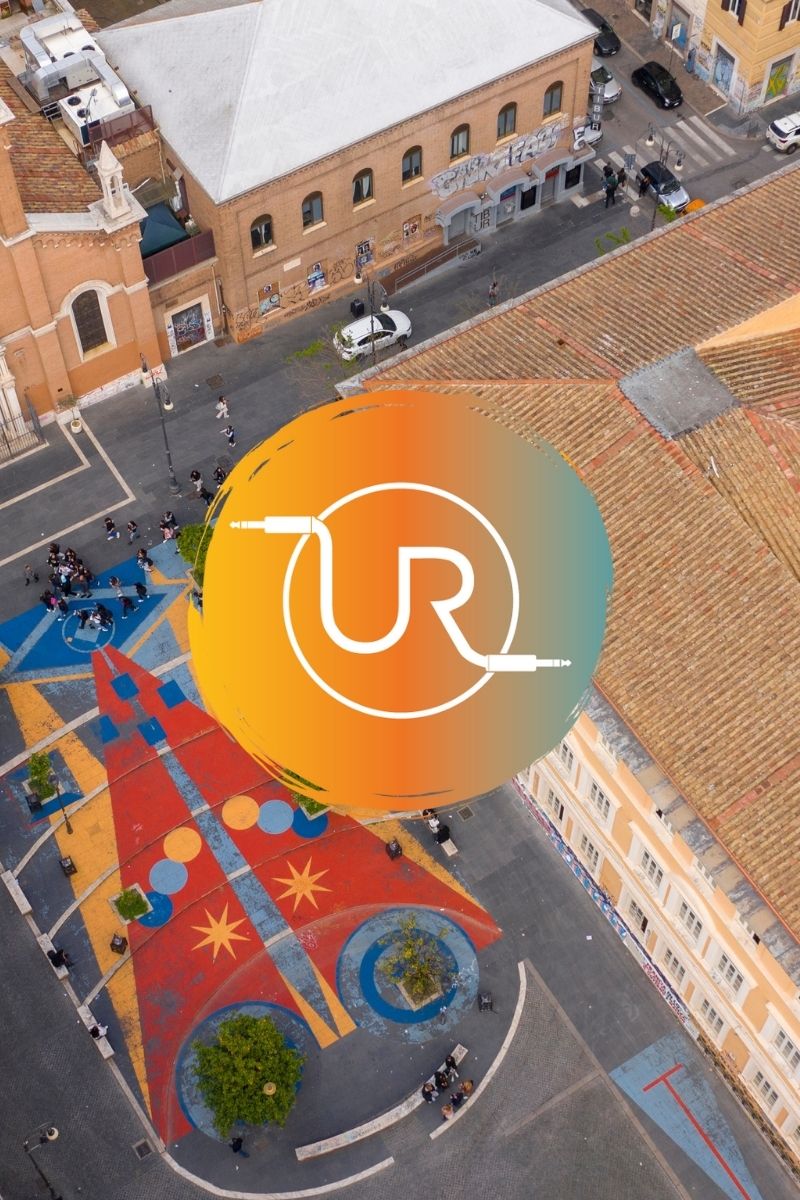
Within walking distance of Rome’s city center is an imposing pyramid. Built by Emperor Caius Cestius, who died in 12 BC, as his own mausoleum, a unique surprise awaits you in a very quiet and peaceful area just behind this structure: Cimitero Acattolico“Cemetery of Non-Catholics.” This place, which has slipped under the radar of many travelers, is of interest not only to tourists, but also to history, literature and art enthusiasts. In Italian Cimitero AcattolicoThe English Cemetery, or English Cemetery as it is commonly known, also houses foreigners and Italians living in Rome who are not Christians or Catholics.
History and Origin
Cimitero Acattolico‘s history dates back to the early 1700s. Since at that time non-Christians were not allowed to be buried in Catholic cemeteries and in consecrated ground in general, in 1716 Pope Clement XI allocated the English Protestant community a site at the foot of the Aurelian walls, the outermost point of the city. After the official opening of the cemetery in 1738, especially Grand Tour Many non-Catholic foreigners, such as English and German intellectuals, merchants and artists who settled in Rome, requested to be buried in this cemetery. Today, as you walk among the tombstones of many important writers, poets, painters and scientists, you can see that the cemetery has transformed into a cultural space over the years.
Names that Stand Out
Cimitero AcattolicoThere are many famous personalities who made the cemetery famous. Especially Percy Bysshe Shelley and John Keats are among the most visited residents of the cemetery. These two important figures of the English Romantic movement were laid to rest here after their short stay in Rome.
John Keats was sure he would be forgotten when he passed away at the age of 25, so instead of his name on his tombstone “Here lies One whose Name was writ in water” (Here lies one whose name is written in water). Shelley died in a maritime accident and his body was brought to Rome where he was buried. On his tombstone, Shakespeare’s The Tempest (The Tempest), quoting the text known as Ariel’s song “Nothing of him that doth fade / But doth suffer a sea-change / Into something rich and strange” (“No part of it disappears / It turns into something wonderful and strange / As it goes through the sea change”).
In addition to these two poets, other notable figures buried in the cemetery include Russian painter Karl Brullov, Italian physicist Giovanni Battista Amici, Italy’s 11th President Giorgio Napolitano, Italian literary figures Carlo Emilio Gadda, Andrea Camilleri and Dario Bellezza, August von Goethe, son of German writer Johann Wolfgang von Goethe, Irish revolutionary Sir William Hamilton and the famous theorist Antonio Gramsci, one of the founders of the Italian Communist Party.
Art and Nature Intertwined
The cemetery attracts attention not only for the famous personalities buried here, but also for its works of art and natural beauty. Cimitero Acattolico One of the most important features of the cemetery is the high artistic value of its tombstones and sculptures. The hand-carved sculptures and tombstones, each carefully designed, mesmerize visitors as they step into the cemetery. Among these sculptures, especially William Wetmore Story’s “Angel of Grief” (Angel of Sorrow) is worth noting. This eye-catching marble sculpture was created for the artist’s deceased wife Emelyn Story.
The cemetery also boasts a dazzling botanical diversity, where you can walk among lemon, olive and cypress trees and see impressive examples of landscape art. These natural beauties contribute to the quiet and peaceful atmosphere of the cemetery and Cimitero Acattolicointo a monumental space in every aspect. The pyramid, clearly visible from many points of the cemetery, provides an impressive backdrop to the cemetery and connects history with the present.
Symbols and their meanings
Every corner of the cemetery is filled with figures symbolizing the deeper meanings of life and death. Doves are common on the tombstones, symbolizing peace and innocence. There are also floral motifs on many graves. Especially broken or withered flowers symbolize the inevitability of death. The figures of open books on the graves are mostly found on the graves of writers and poets, symbolizing that these figures carried their literary legacy to eternity. Another striking symbol is the closed doors. Closed doors represent both the life that ends with death and a gateway to the afterlife.
Cemetery of Foreigners from past to present
Cimitero Acattolico Today it is one of the most visited places in Rome, both by residents and tourists. Thanks to its quiet atmosphere and its location away from the chaos of Rome’s city center, this special place is both relaxing and thought-provoking, allowing for historical and artistic discoveries.
One of the places that should not be missed by those who want to have a different experience when you come to Rome Cimitero AcattolicoThe city mirrors the historical and cultural depth of the city. During a stroll among the silent witnesses of the past, you can deeply feel the multicultural structure of Rome and experience the awareness of walking the thin line between life and death. Do not leave Rome without visiting this rare place where history, art and nature come together, where time stands still, where past and present live together with Unplugged Routes!







Leave a comment: